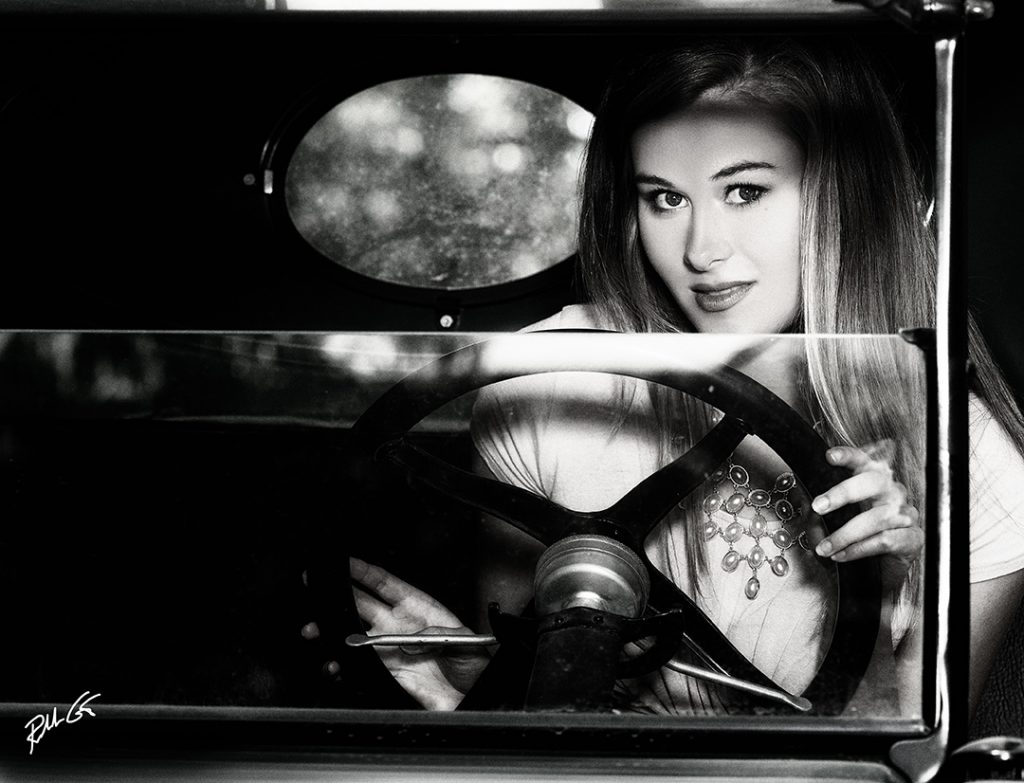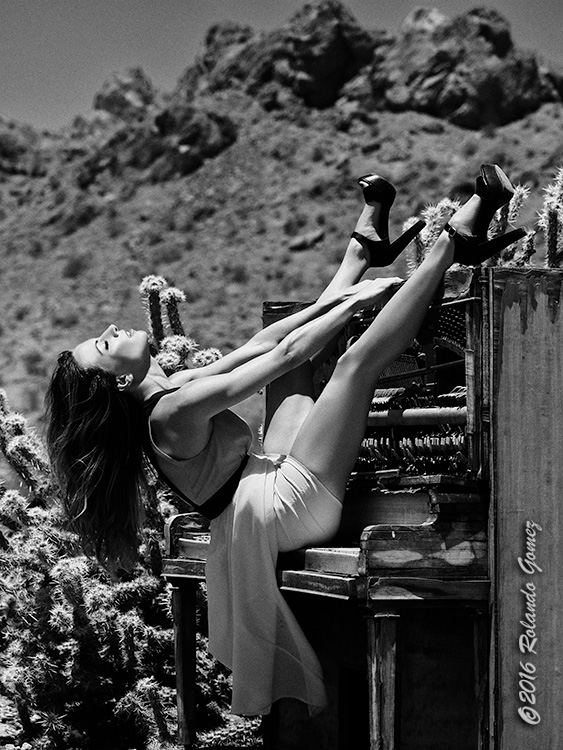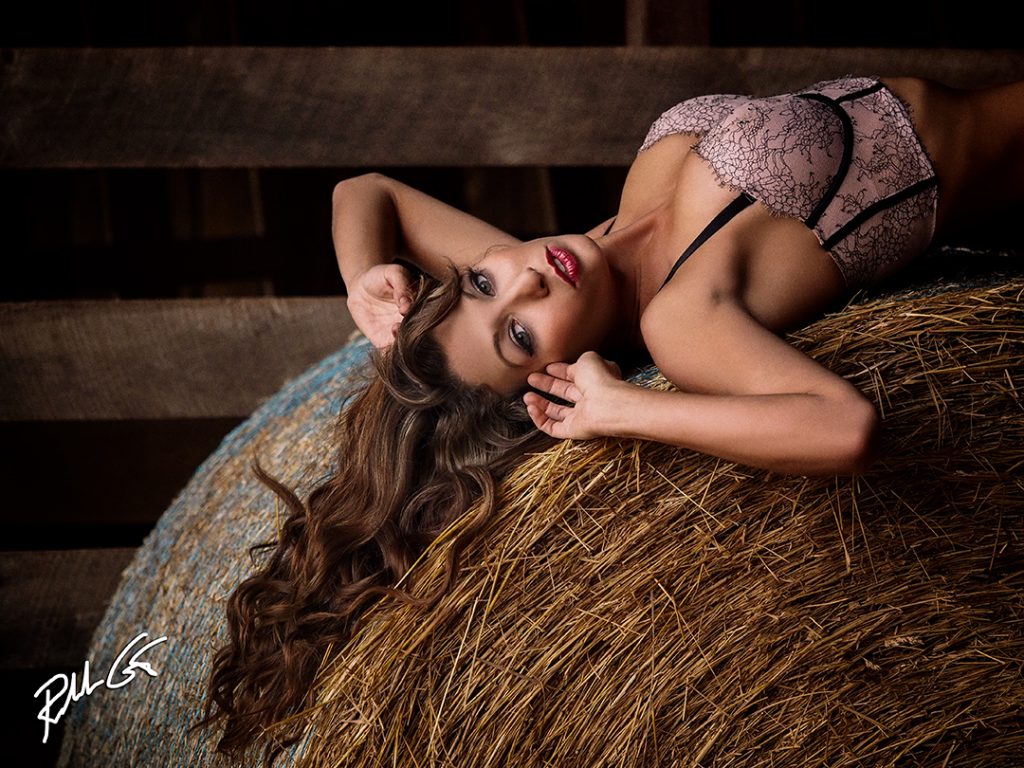One of the biggest challenges for a photographer is creating a photo from scratch, especially when you have a passionate craving to capture something with your camera. When the urge hits, you start thinking, what can I create? So, let me help you with 10 photography tips for great model photos.

Drive forward with ideas to create great model photos.
First, let me preface my mindset. I’ve done photography for over three decades now and today I push myself to shoot something different. I’m about concepts. I crave a more editorial or telling the story result. I expect more from myself than my past photos. I want better and often it’s frustrating. While I battle my frustrations internally, I’m careful that my subject doesn’t see that frustration externally.
While I do tell my subjects my intended approach in creating an image, I make it clear that we will take bad shots to get the great shots. We all take bad shots, regardless of our experience level in photography, the only difference is the professional photographer doesn’t show you the bad shots—amateurs do that.

Jessica and I walked by this piano and out of the blue came up with this idea.
Now 10 photography tips for great model photos:
Let your subject know upfront what you want to achieve. You can do this through discussion, but if you can, provide some examples. Search on the Internet and find photos that you both like and ask yourselves how you can make it better or more original to your own ideas? Take an idea from another creative and make it better.
If you both have no idea of what you want, then brainstorm together. Find a starting point—start from that point and allow for the shooting session to evolve around it. Evolvement is as simple as adding other elements as the shooting progresses, such as a wine glass, a rose, a candle, etc., or removing elements that just don’t fit.
Don’t get stuck, if something isn’t working out. If you don’t feel it, if your subject doesn’t feel it, adjust and move forward, don’t spin your wheels. You both may have wanted to achieve X, but if X isn’t working out, move on to Y, never quit out of frustration.
Communicate throughout the shoot with your subject. It’s give and take. You have to let each other know if it’s working or if it’s not. If it is, keep shooting, let it flow. If it’s not, take a break, move things around, change the location, clothing, anything, just to make the shoot flow in a new direction. For more insight on the importance of communication in photography, see our photography tip, Communication is Essential to Great Photography on this website.
If the lighting isn’t working for you, change it. Light can change the “mood” of the photo as well as the mood of the shoot. SUNBOUNCE photography reflectors can do this by simply changing the fabric screens. If you start with flash photography and you don’t feel it, change it. Switch to existing, natural or ambient light. Don’t be afraid to increase that ISO. Use the modeling lamps, normally tungsten, in your flash heads for ambient light and adjust your white-balance accordingly.
Be proactive and then reactive. By that I mean, take initiative to get the shoot going, then react to what is or isn’t working. As an example, create a scene with what you have around you, but be aware of what takes away from your subject. The human eye always goes to the lightest part of the image first, so if you have a white pillow, take it out of the scene. Look for distractions and remove them. Use the KIS principle, keep it simple, less is more.
Work together, not against each other. Arguing never works and damages rapport between you and your subject. Stay positive. Get feedback from your subject and give feedback too. Stop and look at what’s been captured with your subject, and discuss how to make it better.
Be cognizant of what, how and when you speak. For example, don’t tell your subject to suck her tummy in, tell her to sit tall, straighten her back. Adjust your tone of voice to a happy tone, not a condescending tone. People react to voice inflection and tones.

Ashley always comes with ideas for great photos.
Be aware of your body language and gestures. We communicate to our subjects even when we don’t say one word. A sigh is just as misunderstood as a smile. If you sigh, follow it with an explanation, “I finally got the lighting the way I wanted it, yeah!” If you smile, say something like “Wow, that’s beautiful.” If it can be misunderstood it will be misunderstood. Follow body language with words.
Compliment your subject during the shoot and avoid being critical. If you don’t like the way the model has her hair, ask her to change it, don’t tell her you don’t like it. Learn to leave the “I don’t like this, I don’t like that, etc.” in your mind. Tell your subject what you like, and if you see something you don’t like, change it eloquently. Use words like, “I’d prefer this, or let’s try that.”
So, those are my top ten photo tips when it comes to the photography of models. Now it’s up to you to grab your camera and take your passionate urge to create some great photos along with these photography tips and get it done. You can do it.



